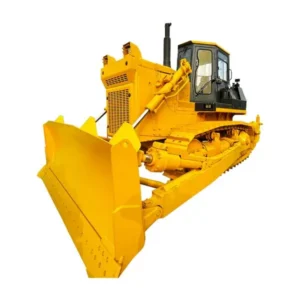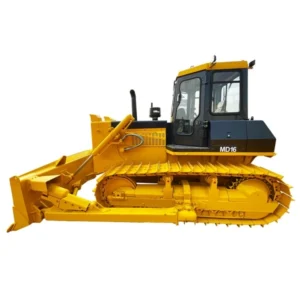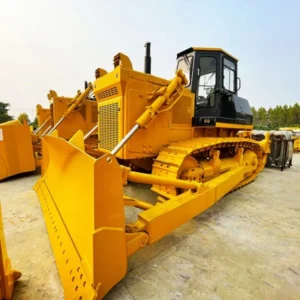Driving a dozer, or bulldozer, is a crucial skill in construction and earth-moving industries. Whether you’re a seasoned operator or just starting, mastering this powerful machine requires knowledge, practice, and a keen eye for safety. This comprehensive guide will provide you with essential tips for smooth operations, ensuring efficiency and safety on the job.
Introduction

Driving a dozer isn’t just about moving dirt from one place to another. It involves understanding the machine’s mechanics, mastering control techniques, and being aware of safety protocols. In this guide, we will delve into the intricacies of driving a dozer, offering valuable tips and insights to help you become a proficient operator.
Table of Contents
The Basics of Driving a Dozer
Before you can master the art of driving a dozer, it’s essential to understand the basic components and functions of the machine. This section will cover the fundamental aspects of a dozer and how they contribute to its operation.
Understanding the Controls
A dozer is equipped with various controls, including joysticks, pedals, and levers. Familiarize yourself with these controls and their functions:
- Joystick: Controls the blade’s movement.
- Pedals: Operate the tracks and allow for turning.
- Levers: Control the ripper and other attachments.
Pre-Operation Inspection
Performing a thorough inspection before operating the dozer is critical. Check for any visible damage, ensure all fluids are at proper levels, and verify that all controls are functioning correctly.
Mastering Dozer Techniques
Driving a dozer efficiently requires mastering several techniques. These techniques will not only improve your productivity but also ensure the longevity of the machine.
Blade Control Techniques
Controlling the blade is one of the most critical skills in driving a dozer. Here are some tips:
- Angling: Adjust the blade angle to push material to one side.
- Tilting: Tilt the blade to control the depth of the cut.
- Pitching: Adjust the pitch for optimal cutting or smoothing.
Efficient Material Handling
Efficiently moving material is key to completing tasks on time. Practice these tips:
- Slot Dozing: Create a slot to confine material and reduce spillage.
- V-Dozing: Use the V-shaped blade configuration for large volumes of material.
- Spreading: Spread material evenly by controlling the blade’s height and angle.
Navigating Difficult Terrain
Driving a dozer on challenging terrain requires skill and caution. Follow these guidelines:
- Assess the Terrain: Identify potential hazards such as rocks and soft ground.
- Adjust Speed: Reduce speed on uneven or slippery surfaces.
- Maintain Stability: Keep the dozer balanced by distributing weight evenly.
Safety Tips for Driving a Dozer
Safety is paramount when driving a dozer. Adhering to safety protocols protects you and those around you from accidents and injuries.
Personal Protective Equipment
Always wear the appropriate PPE, including:
- Hard Hat: Protects your head from falling objects.
- Safety Glasses: Shields your eyes from debris.
- High-Visibility Clothing: Makes you easily visible to others.
- Steel-Toed Boots: Protect your feet from heavy objects.
Operating in Hazardous Conditions
When driving a dozer in hazardous conditions, extra precautions are necessary:
- Weather Considerations: Be aware of weather conditions that can affect visibility and traction.
- Night Operations: Ensure proper lighting and reflective gear are used during night shifts.
Regular Maintenance and Checks
Regular maintenance ensures the dozer operates smoothly and reduces the risk of malfunctions. Key maintenance tasks include:
- Fluid Levels: Check and maintain engine oil, hydraulic fluid, and coolant levels.
- Track Tension: Ensure tracks are properly tensioned to prevent derailment.
- Blade Wear: Inspect the blade for wear and replace it as needed.
Troubleshooting Common Issues
Even with proper maintenance, issues can arise when driving a dozer. Knowing how to troubleshoot common problems can minimize downtime and keep operations running smoothly.
Engine Problems
Common engine issues include overheating, power loss, and hard starting. Troubleshooting tips:
- Overheating: Check the coolant level and ensure the radiator is clean.
- Power Loss: Inspect the fuel system for blockages or leaks.
- Hard Starting: Verify the battery charge and inspect the starter motor.
Hydraulic System Issues
Hydraulic problems can affect the blade and other attachments. Troubleshooting tips:
- Slow Operation: Check for low hydraulic fluid levels or air in the system.
- Leaks: Inspect hoses and fittings for signs of wear or damage.
- Noisy Operation: Listen for unusual noises that could indicate a failing pump.
Advanced Dozer Techniques

For experienced operators, mastering advanced techniques can enhance productivity and precision when driving a dozer.
Fine Grading
Fine grading involves creating a smooth, even surface. Tips for fine grading:
- Blade Control: Use minimal blade adjustments to achieve a smooth finish.
- Laser Guidance: Utilize laser systems for precise grading.
Bulk Earthmoving
For large-scale projects, efficient bulk earthmoving is crucial. Techniques include:
- Push Loading: Use multiple dozers to push material into a central pile.
- Mass Excavation: Coordinate with other machinery to move large volumes of earth efficiently.
Using GPS Technology
GPS technology can significantly improve accuracy and efficiency. Benefits of GPS in dozing:
- Precision: Achieve precise grading and excavation.
- Efficiency: Reduce rework and increase productivity.
- Documentation: Maintain accurate records of work completed.
Table of Common Dozer Models and Specifications
Below is a table of common dozer models and their specifications, which can help in selecting the right dozer for your needs:
| Model | Operating Weight (tons) | Application |
|---|---|---|
| Caterpillar D6 | 20.2 | General construction, forestry |
| Crawler Dozer MD16 | 17.0 | Road construction, land clearing |
| John Deere 850K | 21.8 | Heavy-duty earthmoving, mining |
| Liebherr PR 736 | 20.6 | Industrial applications, excavation |
Conclusion
Mastering the art of driving a dozer requires a combination of knowledge, practice, and adherence to safety protocols. By understanding the basics, mastering advanced techniques, and maintaining your equipment, you can ensure smooth operations and a successful career as a dozer operator. Whether you’re navigating difficult terrain, handling bulk earthmoving projects, or performing fine grading, the skills and tips outlined in this guide will help you achieve optimal results.
Driving a dozer is both an art and a science. With dedication and continuous learning, you can become a proficient operator capable of tackling the most challenging tasks with confidence and precision.
FAQ
What are the primary responsibilities of a dozer operator?
A dozer operator is responsible for operating the machine safely and efficiently, performing routine maintenance checks, and ensuring the worksite is safe and clear of obstacles.
How can I improve my dozer operating skills?
Practice regularly, seek mentorship from experienced operators, and stay updated on the latest techniques and technologies in dozer operations.
What safety protocols should I follow when driving a dozer?
Always wear appropriate PPE, perform pre-operation inspections, adhere to site-specific safety guidelines, and be aware of your surroundings at all times.
What should I do if my dozer breaks down?
If your dozer breaks down, follow these steps:
- Safely stop the machine.
- Notify your supervisor.
- Perform basic troubleshooting if trained to do so.
- Arrange for professional repair services if needed.
Can I operate a dozer in all weather conditions?
While dozers are designed for various conditions, extreme weather can pose risks. Reduce speed, increase visibility measures, and take extra precautions in adverse weather.








-150x150.webp)
